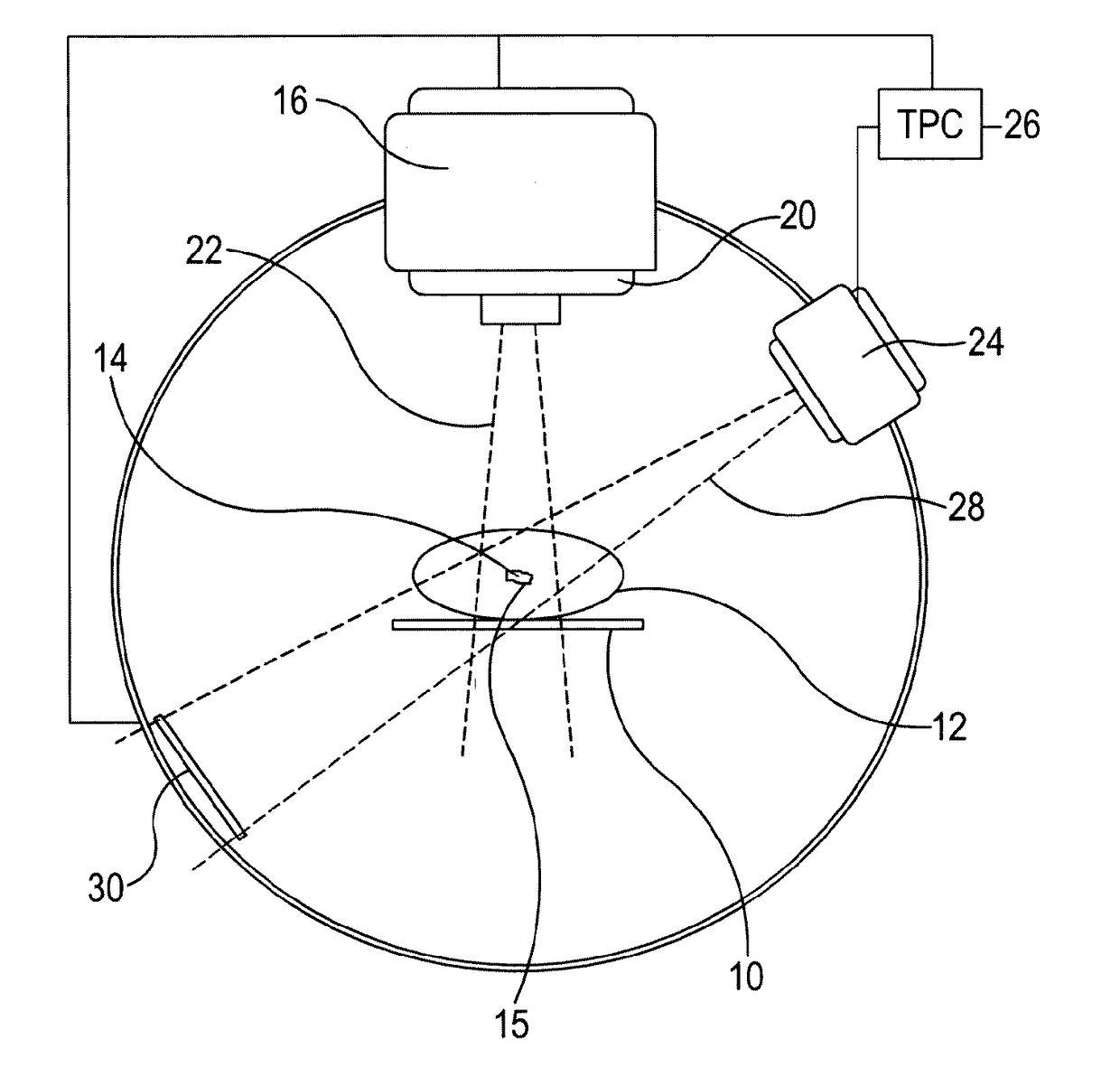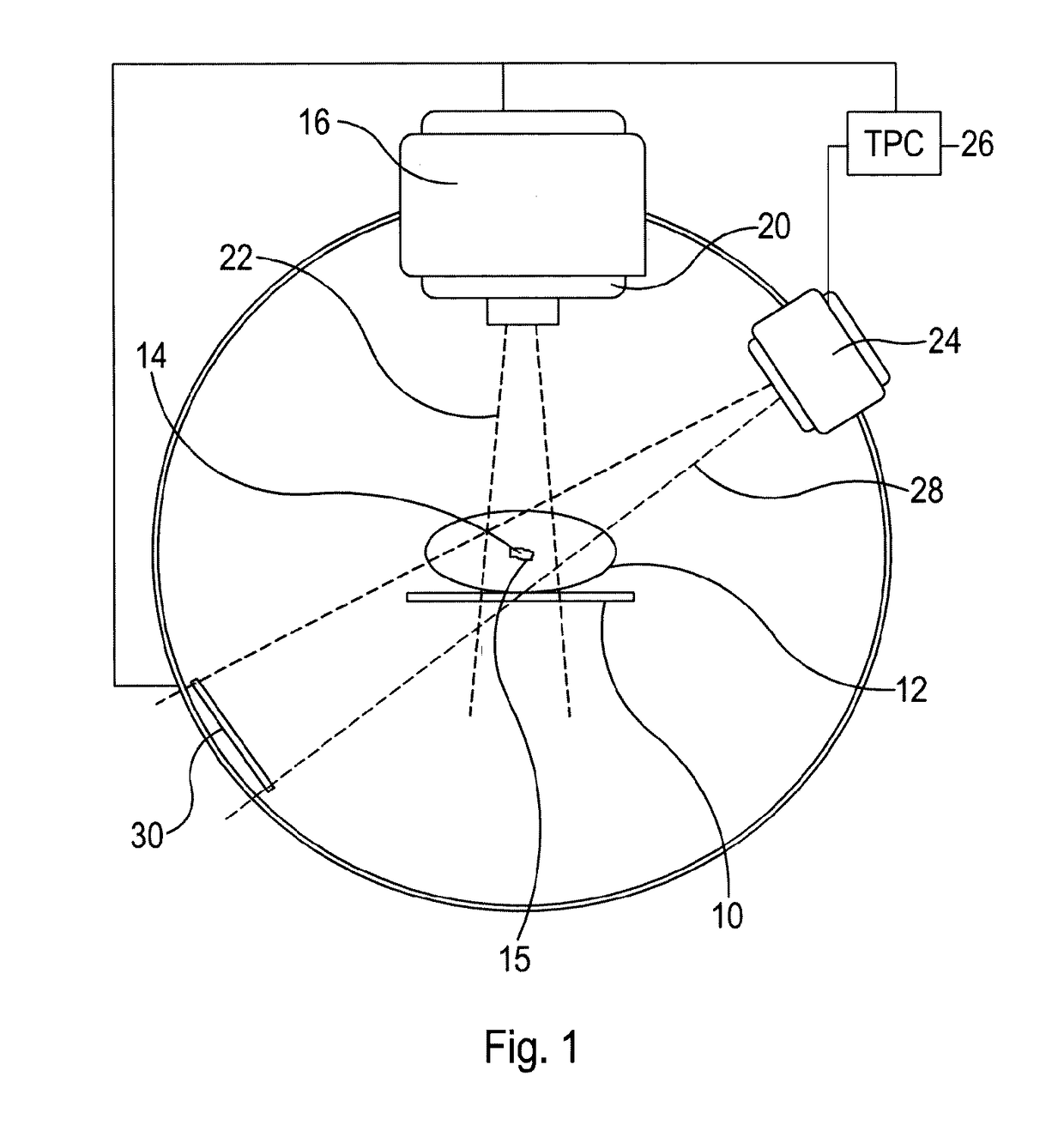Image-guided radiation therapy
a radiation therapy and image technology, applied in radiation therapy, x-ray/gamma-ray/particle irradiation therapy, radiation devices, etc., can solve the problems of damage to cells thus exposed, inacceptable side effects, poor image contrast, etc., and achieve the effect of determining efficiency
- Summary
- Abstract
- Description
- Claims
- Application Information
AI Technical Summary
Benefits of technology
Problems solved by technology
Method used
Image
Examples
example
[0091]Method: Pencil beams were generated for each beam angle of the treatment and a fluence optimization performed. The pencil beams, together with the patient anatomy and the above optimal fluence form the input of the algorithm. During each of a number of iterations the following steps were performed: A fluence optimization was carried out, and each beam's fluence then split to discrete intensity levels. Deliverable segments were calculated for each of these. Each segment's area was multiplied by its intensity to determine its efficiency. The most efficient segment among all beams was then chosen to deliver a part of the calculated fluence, and the dose that would be delivered by this segment calculated. This delivered dose was then subtracted from the remaining dose. This loop was repeated until 90% of the dose had been delivered and a final segment weight optimization was performed to reach full convergence.
[0092]Results: The algorithm was tested in several prostate cases. All ...
PUM
 Login to View More
Login to View More Abstract
Description
Claims
Application Information
 Login to View More
Login to View More - R&D
- Intellectual Property
- Life Sciences
- Materials
- Tech Scout
- Unparalleled Data Quality
- Higher Quality Content
- 60% Fewer Hallucinations
Browse by: Latest US Patents, China's latest patents, Technical Efficacy Thesaurus, Application Domain, Technology Topic, Popular Technical Reports.
© 2025 PatSnap. All rights reserved.Legal|Privacy policy|Modern Slavery Act Transparency Statement|Sitemap|About US| Contact US: help@patsnap.com



